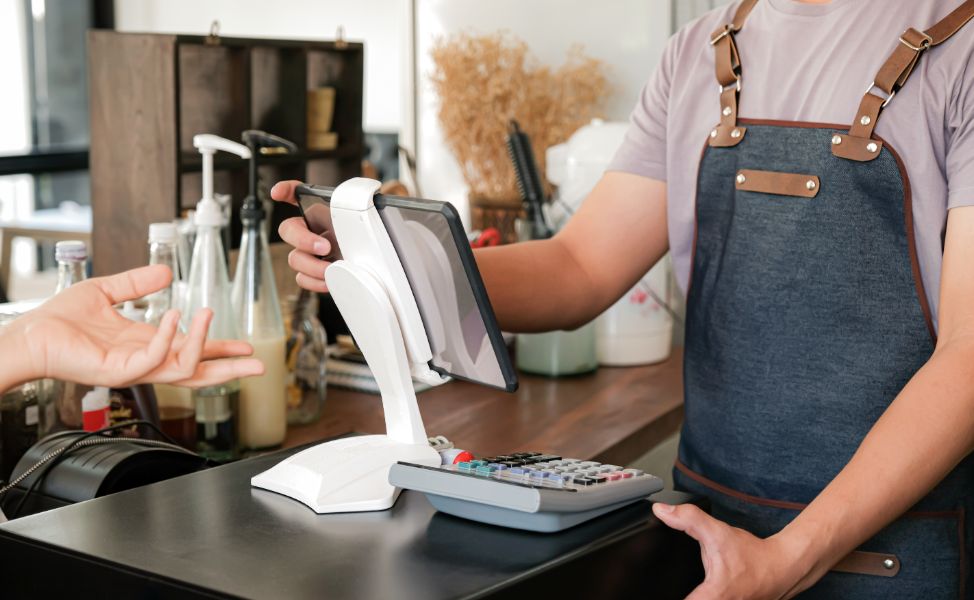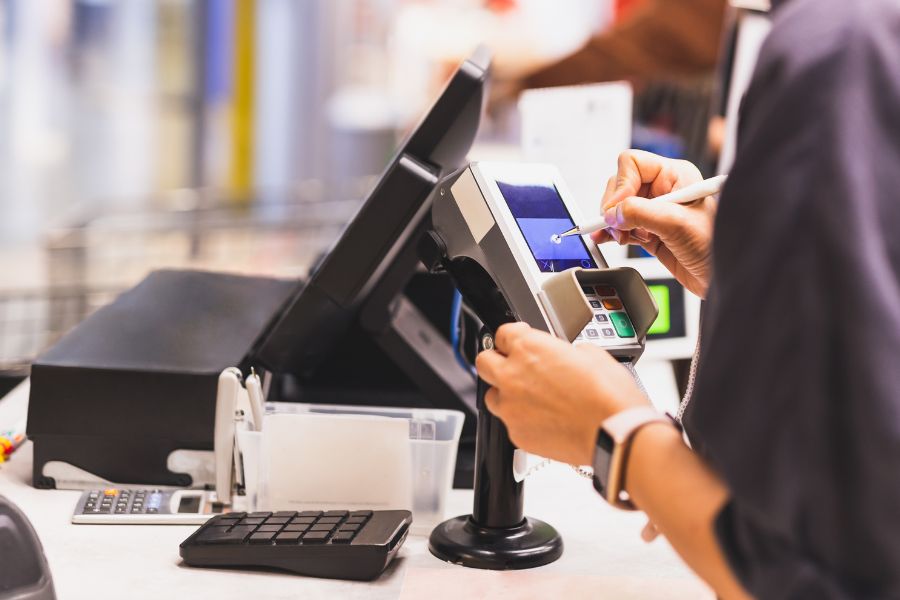Embark on a journey towards retail efficiency with this article. Our comprehensive guide unveils the transformative power of synchronizing online and physical stores, exploring the benefits and practical steps for seamless integration. Dive into the world of WooCommerce POS integration to unlock operational synergy and elevate the shopping experience.
What Are The Benefits Of WooCommerce POS Integration?
WooCommerce, with a commanding 39 percent market share in 2023, positioned itself as the global leader in e-commerce software. A crucial component of its success lies in the strategic cornerstone of WooCommerce POS Integration, providing businesses with numerous advantages to enhance operational efficiency and create a seamless shopping experience for customers. Let’s delve deeper into each facet of these benefits:
- Unified Inventory Management: The integration orchestrates a symphony of real-time synchronization, harmonizing inventory levels across online and physical stores. This meticulous coordination mitigates discrepancies, allowing businesses to maintain a precise and up-to-date understanding of stock levels across all sales channels.
- Streamlined Operations: The transformative power of automation comes to the forefront, ushering in an era of streamlined operations. Tasks such as order processing and inventory updates are no longer labor-intensive, reducing the manual workload, minimizing errors, and orchestrating an operational symphony that hums with efficiency.
- Multi-Channel Selling: E-commerce sales from multichannel online retailers in the United States reached a staggering 350 billion U.S. dollars. This expansion has led customers into an era of consistency, where the shopping experience seamlessly integrates both digital and physical dimensions. Whether customers choose to make purchases online or in-store, transactions effortlessly traverse various channels, ensuring a unified and cohesive customer journey.
- Enhanced Customer Experience: Businesses ascend to new heights of customer-centricity with access to comprehensive customer profiles from Woocommerce POS integration. From order history to individual preferences, the integration empowers businesses to craft personalized interactions, fostering an environment where engagement becomes an art form.
- Accurate Reporting and Analytics: The integration serves as a beacon illuminating the path to data-driven decision-making. By consolidating data from online and offline sales channels, businesses gain valuable insights into the nuances of sales performance, customer behavior, and emerging trends, thereby guiding strategic choices.
- Efficient Order Fulfillment: Order processing takes on a new velocity, propelled by the integration’s optimization of inventory allocation. The specter of overselling is exorcised, replaced by a nimble and responsive fulfillment process that ensures customer orders are promptly met.
- Inventory Visibility: Real-time tracking emerges as a strategic ally, empowering businesses to make well-informed decisions about restocking. The integration becomes a compass for navigating the ebb and flow of inventory, preventing stockouts, and ensuring an unobstructed flow within the supply chain.
- Time and Cost Savings: The integration’s twin virtues of automation and synchronization become potent time and cost-saving tools. The onerous burden of manual data entry is alleviated, freeing up valuable time, minimizing errors, and paving the way for heightened cost efficiency in operational endeavors.
- Adaptability to Changing Trends: In the ever-evolving landscape of consumer preferences, the integration acts as a chameleon, embodying adaptability. A flexible system empowers businesses to swiftly respond to market trends, adjusting product offerings and sales strategies with the agility needed to stay ahead of the curve.
- Scalability: As businesses embark on the journey of growth, the integration serves as a benevolent guide. The addition of new sales channels or physical locations becomes a seamless endeavor, devoid of the entanglements associated with managing disparate systems. The integration stands as a testament to scalability, adapting to the expanding horizons of enterprise.
In summary, WooCommerce POS Integration provides businesses with a holistic solution that unifies inventory management, streamlines operations, and enhances the overall shopping experience. The benefits extend to customer engagement, data-driven decision-making, and the adaptability required to thrive in a dynamic retail landscape.
Step By Step Guideline To Integrate Woocommerce With POS
Let’s delve into a more detailed exploration of each step in setting up WooCommerce POS integration for a comprehensive understanding.
Step 1: Install the Plugin
Begin by initiating the installation process for the WooCommerce POS integration plugin. To acquire a plugin, click on the “Buy Now” button available on the provided link. Once the .zip file is downloaded to your device, navigate to your WordPress dashboard and proceed to WooCommerce > Plugins > Add New.
Here, select “Choose File” and upload the downloaded .zip file. Confirm the installation by clicking “Install Now,” and upon completion, activate the extension to finalize the setup.
Step 2: Configurations
After successfully installing the plugin, move on to configuring its settings. In your WooCommerce Dashboard, hover over “Settings” and navigate to “Advanced” and then the plugin name. This section provides various fields for customization:
- Products to Display: Choose whether to showcase products from specific categories or display all products.
- Products Per Page: Set the desired number of items to be displayed on each page.
- Receipts/Tax Invoices: Though optional, these details will appear on receipts and tax invoices generated by the plugin orders. Customize optional text entries in this section to modify the language used on these documents. Don’t forget to save changes before proceeding to the next step.
Step 3: Set Up Tax Rules
The application of tax rates to orders is determined by the customer’s location and the tax rate settings in Woocommerce POS integration. Ensure you specify a tax rate for your state in WooCommerce > Settings > Tax > Standard Rate. In the absence of a chosen tax rate for your state, no taxes will be applied.
The plugin will also check your store’s address if a customer completes an order on your WooCommerce > General > Settings page.
Step 4: Connect with Payment Account (Optional)
For added convenience, you can opt to connect your WooCommerce POS with the Square payment system. To enable integration with Square, visit your Square Developer
Dashboard and either create a new application or open an existing one. Ensure your application is configured to use the latest version of the Square production API. Retrieve your unique Application ID and Access Token from the Square Dashboard and enter them into the POS WordPress plugin settings under the Square integration tab. Save changes to activate the connection.
Step 5: Print Invoices
Printing invoices can be done using standard print settings for Letter/A4 format on common desktop printers. For thermal receipt printers, follow specific steps such as selecting a receipt printer, printing the entire document in a portrait layout, and adjusting paper settings accordingly. When it comes to this function of Woocommerce POS integration, ConnectPOS is a highlighted name. As a trusted point-of-sale provider serving retailers globally, ConnectPOS can accommodate various types of receipt printers.
Step 6: Personalize Your Invoices
Navigate to the plugin > Settings in the sidebar menu to access customization options for various sections of receipts and invoices. Online store owners can enjoy greater flexibility by modifying text elements such as the store name, order number prefix, price column title, and more. For this kind of function, ConnectPOS also provides several tools to customize the POS, allowing users to create a new receipt template and tailor it to their preferences.
By meticulously following these step-by-step instructions, you not only install the WooCommerce POS integration but also tailor it to your specific business needs. This comprehensive setup ensures a unified and efficient retail experience, combining online and in-store operations seamlessly.
Top 6 Best POS Systems For Woocommerce POS Integration
We unveil the top 6 POS systems that effortlessly sync with WooCommerce, offering businesses a comprehensive solution to enhance operational efficiency and customer satisfaction. Whether you’re a small boutique or a thriving enterprise, finding the right POS system can make all the difference in streamlining your sales channels.
ConnectPOS
ConnectPOS has emerged as a beacon in the retail landscape of Woocommerce POS integration, earning global acclaim as an award-winning omnichannel solution. This sophisticated platform has redefined in-store operations by simplifying and digitizing processes, providing retailers with a robust toolset to streamline their business.
At the heart of ConnectPOS is the power to centralize data in a singular platform, offering a holistic approach to managing multiple sales touchpoints and exerting precise control over inventory.
Designed with scalability in mind, ConnectPOS is a versatile solution catering to businesses of all sizes, focusing on retail chains and enterprises. Its universal applicability is underscored by its usage across the globe, contributing significantly to the success stories of industry giants such as ASUS, Eyewa, and SCG, among thousands of other brands.
Key features that distinguish ConnectPOS include its compatibility with various devices (PC, tablet, mobile) and operating systems (iOS, Android, ChromeOS, macOS). The inclusion of loyalty programs, gift cards, tax management, and real-time reporting and forecasting further solidify its position as a comprehensive solution of WooCommerce POS for retailers
navigating the complexities of modern commerce.
Point of Sale for WooCommerce: Bridging the Physical and Digital Divide
The Point of Sale for WooCommerce plugin emerges as a pivotal tool in seamlessly managing diverse retail channels. This plugin bridges the gap between physical and online retail, offering a virtual storefront that mirrors the dynamics of a brick-and-mortar shop. Priced at $199, its features extend beyond the conventional, providing businesses with a versatile and intuitive system.
One of its standout features is the support for multiple POS setups, making it adaptable to the unique needs of different businesses. The plugin enables effortless selling across physical and online platforms, ensuring synchronization of stock, orders, and customer data. Additionally, the ability to add custom items exclusively available at the point of sale adds a layer of flexibility for businesses seeking a tailored retail experience.
Integration with third-party card terminals for payments, automatic tax calculations, and customizable POS experiences for each shop department further enhance the functionality of this plugin, making it an invaluable asset for retailers seeking a comprehensive and seamless point-of-sale solution.
wePOS
In the realm of Woocommerce POS integration, wePOS is rapidly gaining popularity for its efficiency and user-friendly interface. This plugin simplifies the process of managing inventories and handling orders, providing businesses with a smart solution that seamlessly integrates with their existing WooCommerce websites.
Noteworthy features of wePOS include special points designed specifically for WooCommerce, the capability to handle multiple orders simultaneously, and seamless integration of online and physical retail stores. Its super responsiveness and adaptability to various device sizes, coupled with an advanced user interface design, make wePOS a compelling choice for businesses looking to elevate their point-of-sale experiences.
Square for WooCommerce
Square for WooCommerce introduces a cloud-based point-of-sale system that seamlessly integrates with WooCommerce shops, unlocking retail point-of-sale capabilities. Priced at a competitive $79, this plugin offers a cost-effective solution with a plethora of features designed to enhance the retail experience.
A single platform to track sales and listings across all applications, chargeback protection, and the acceptance of major debit and credit cards for online payments are among the standout features. The swift deposit of funds further solidifies its position as an efficient and reliable choice for businesses seeking a seamless fusion of cloud-based and WooCommerce retail capabilities.
YITH
This system provides the flexibility to establish an unlimited number of locations, each equipped with an array of registers. The seamless synchronization of orders and inventory is achieved through the WooCommerce REST API, ensuring a cohesive and up-to-date system.
Cashiers benefit from user-friendly functionalities such as the ability to search for products, scan barcodes for quick product lookup, and even add new products directly within the POS system. At the checkout stage, customers can choose to pay with cash, credit or debit cards, and other offline methods. The plugin supports multiple payment methods, allowing for the convenient splitting of orders between them.
In addition to facilitating smooth transactions, YITH Point of Sale for Woocommerce POS integration empowers cashiers to apply discounts, coupons, and markups, providing flexibility in adjusting the cost of an order according to specific scenarios.
It’s worth noting that YITH Point of Sale for WooCommerce does not currently support offline mode, which may be a consideration for those seeking a portable POS system. Additionally, while there are no dedicated mobile apps, the POS interface is mobile-responsive, allowing users to access it conveniently via web browsers on mobile devices.
This feature-rich plugin comes with a starting price of $199.99 per year, offering the convenience of use on a single site. As an integral part of the YITH ecosystem, it seamlessly integrates into WooCommerce setups, adding another layer of functionality and convenience to businesses utilizing this popular eCommerce platform.
Conclusion
By unifying inventory management, streamlining operations, and enhancing customer interactions, WooCommerce POS integration becomes the key to sustained success. Embrace the future of retail by implementing these insights, ensuring your business stays ahead in the dynamic world of commerce. For more understanding, please contact us.
ConnectPOS is a all-in-one point of sale solution tailored to meet your eCommerce POS needs, streamline business operations, boost sales, and enhance customer experience in diverse industries. We offer custom POS with features, pricing, and plans to suit your unique business requirements.




